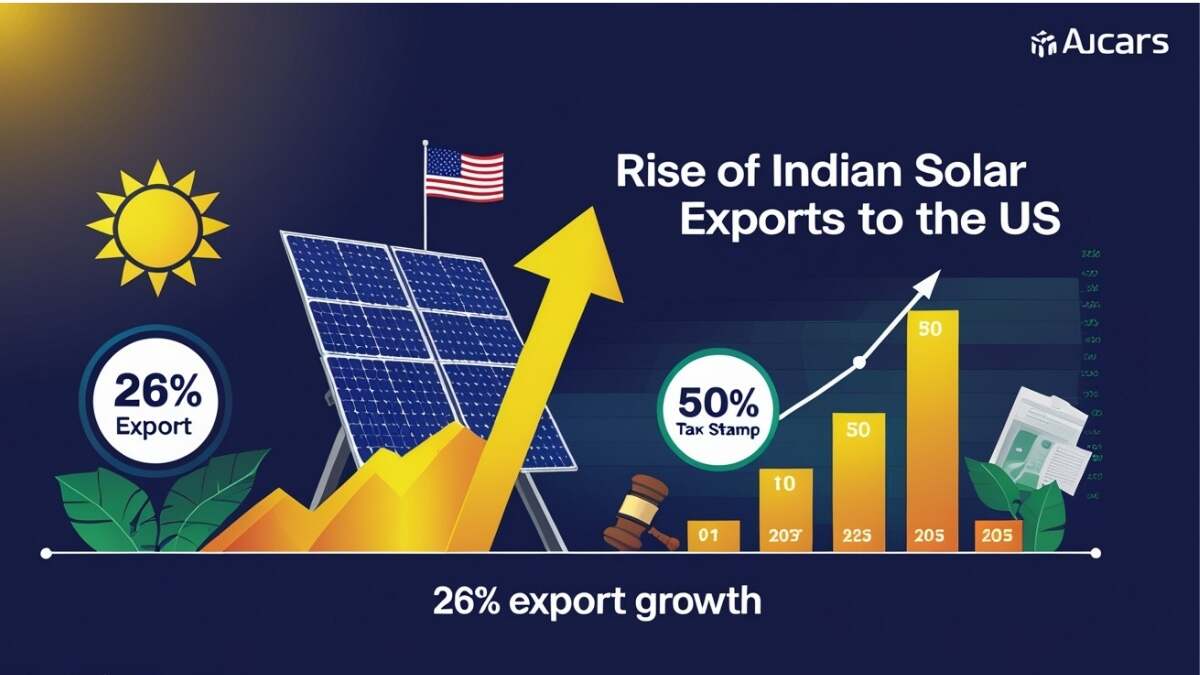The US International Trade Commission has declared that imports from India are “not insignificant,” dismissing the argument made by Indian companies that their sizable domestic market and distinct supply patterns shield them from being grouped with exporters from Southeast Asia.
Indian Solar Exports Hit
The US International Trade Commission’s investigative report found that imports from Indonesia, Laos, and India are hurting US manufacturers of crystalline silicon photovoltaic (CSPV) cells and modules. The US Department of Commerce will need the commission’s preliminary findings in order to go on with its anti-dumping probe, which may ultimately result in higher import taxes from India.
This comes after a group of US solar producers filed a lawsuit alleging improper government subsidies and product dumping by exporters from Indonesia, Laos, and India. In August of this year, the US Commerce Department then began countervailing duty (CVD) and anti-dumping (AD) investigations.
US Solar Duty Timeline
In accordance with US regulations, the ITC must provide a preliminary decision within 45 days of receiving a petition, and the Department of Commerce must choose whether to launch an inquiry within 20 days. We anticipate making final decisions by 2026’s second quarter.
For Indian companies who are among the top exporters to the US, such as Waaree Energies, Premier Energies, and Adani’s Mundra Solar, this is important. The Indian responses argued that their sizable domestic market and distinct supply patterns shielded them from being grouped with Southeast Asian exporters, but the ITC pointed out that imports from India are “not insignificant.”
Indian CSPV Exports Rise
The primary focus of the investigation was crystalline silicon-based photovoltaic (CSPV) cells and the products made from them, including panels, modules, and laminates.
The ITC research, which is accessible on its website, projects that Indian CSPV cell shipments to the US would rise between 2024 and 2026.
According to the research, Indian exporters made the claim that “India has a big and developing domestic market for CSPV cells and modules, which makes Indian manufacturers less export-oriented than producers in Indonesia or Laos.”
US Solar Industry Hurt
According to the commission, four US manufacturers reported having to lower prices between January 2022 and March 2025, two said they had to reverse previously announced price hikes, and three companies said they had suffered a loss. The commission questioned 14 businesses in relation to anti-dumping claims. Data from market research company IBISWorld indicates that there are over a dozen companies in the United States that manufacture solar panels.
“We conclude that there is a plausible indication that a U.S. industry is materially harmed due to subject imports of CSPV cells and modules from India, Indonesia, and Laos that are purportedly subsidized by the governments of India, Indonesia, and Laos and sold in the U.S. at less than fair value,” the ITC stated.
Indian Solar Exports
Mercom reports that shipments of solar modules and cells from India climbed 26.1 percent from Q1 2025 to Q1 2025, from $212.2 million to $267.6 million. In Q1 2025, 99.5 percent of India’s exports of solar cells and modules went to the US, making it the country’s top destination.
A 50 percent tax on Indian products is already putting strain on Indian solar exports to the US, and the AD/CVD probes would push local firms to reroute supplies to other markets.

